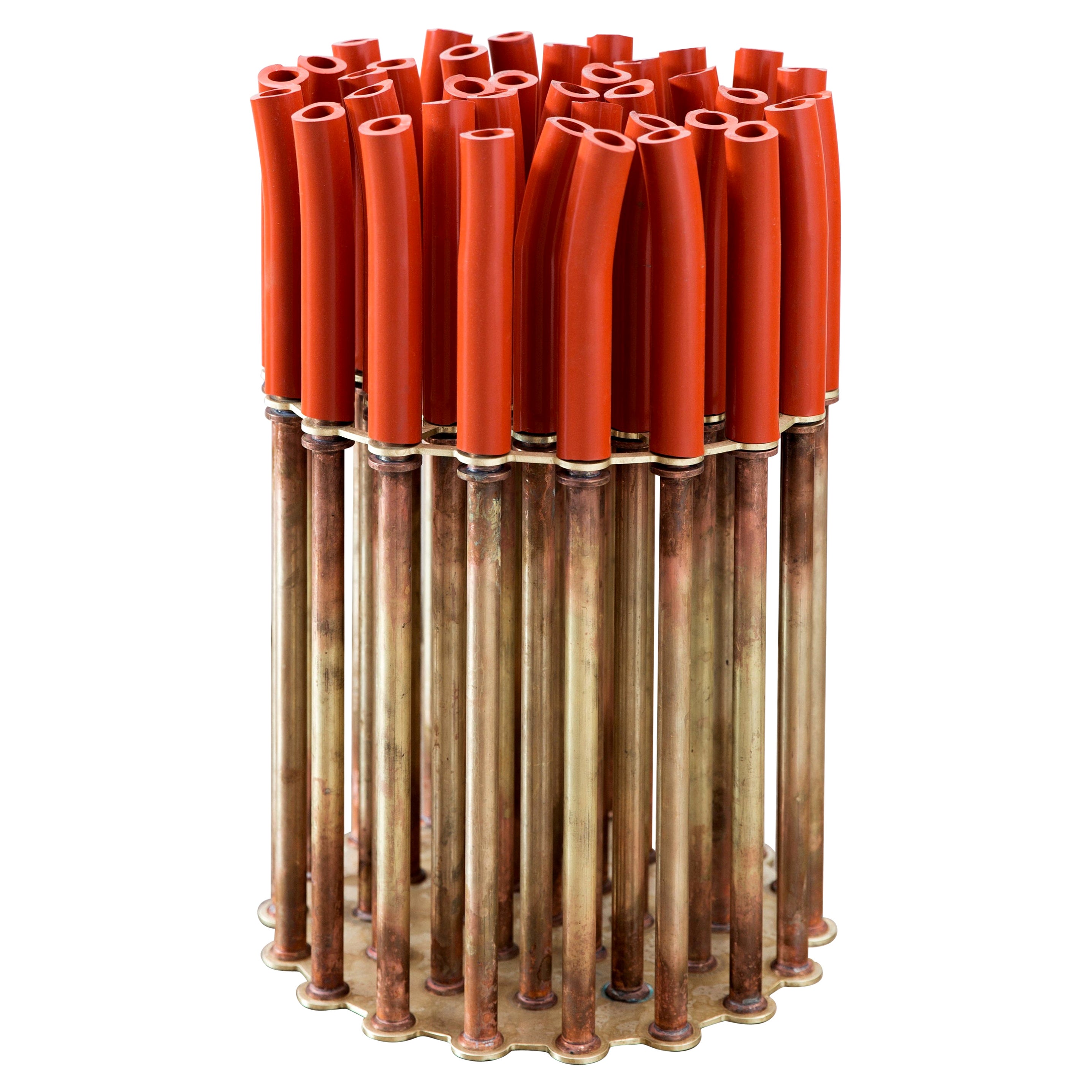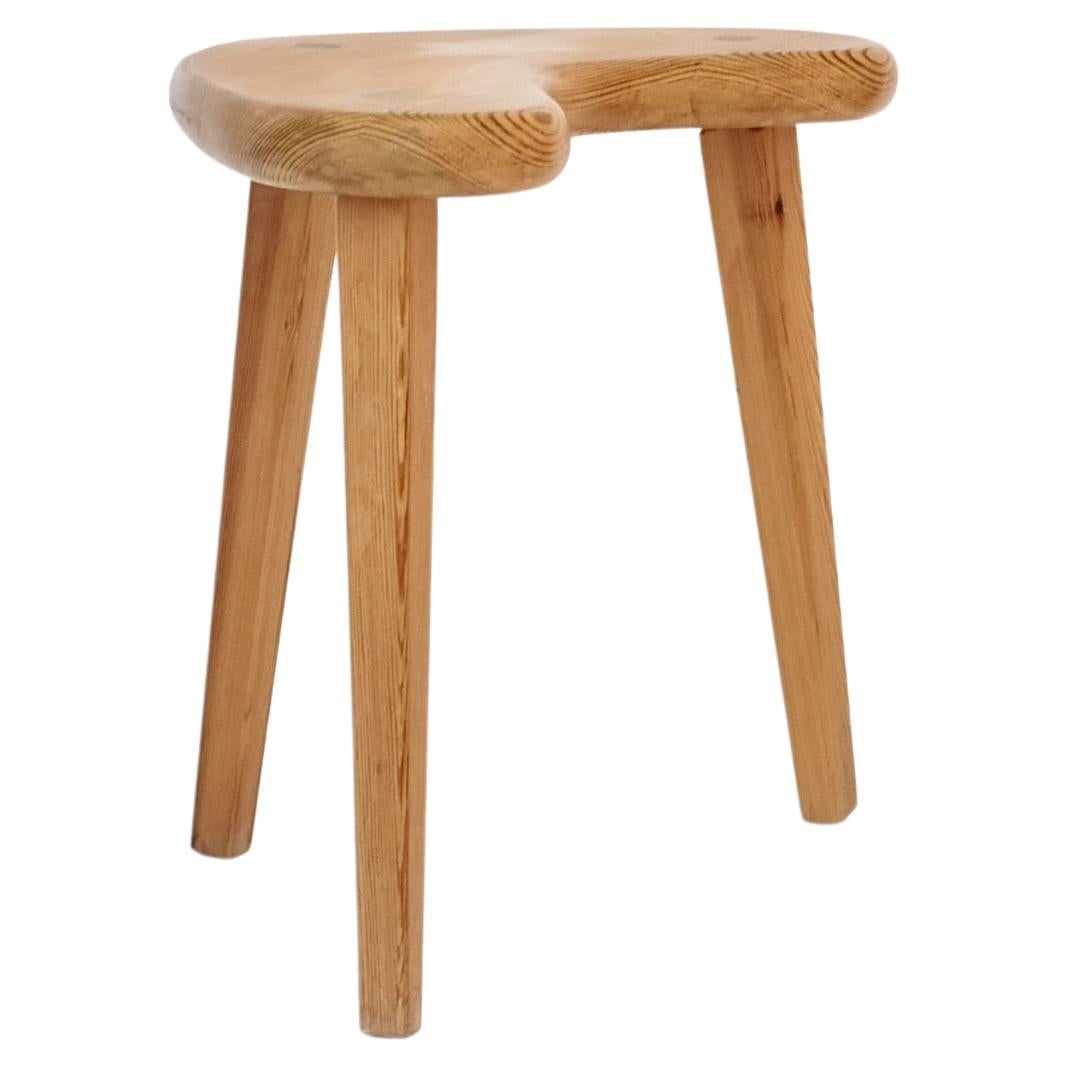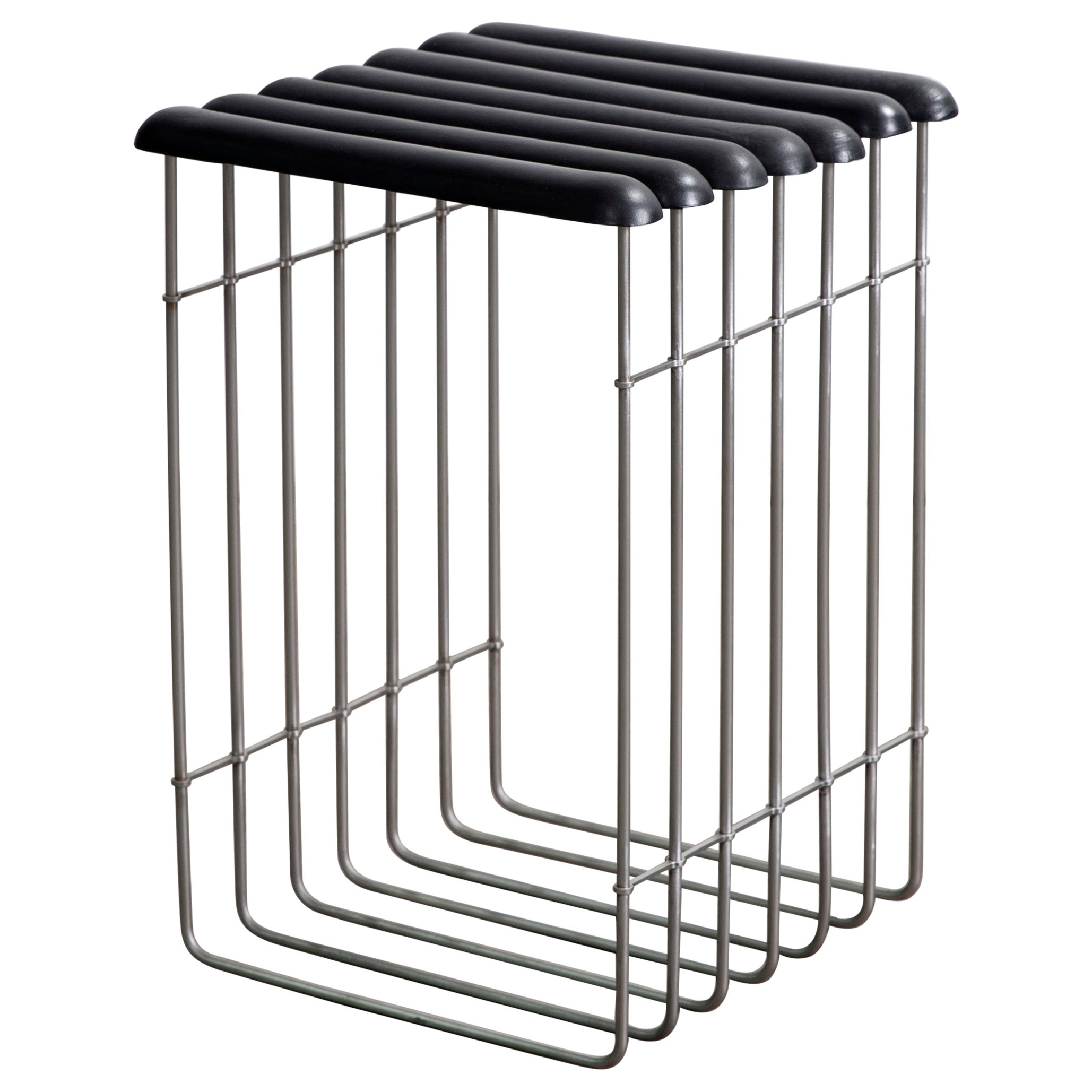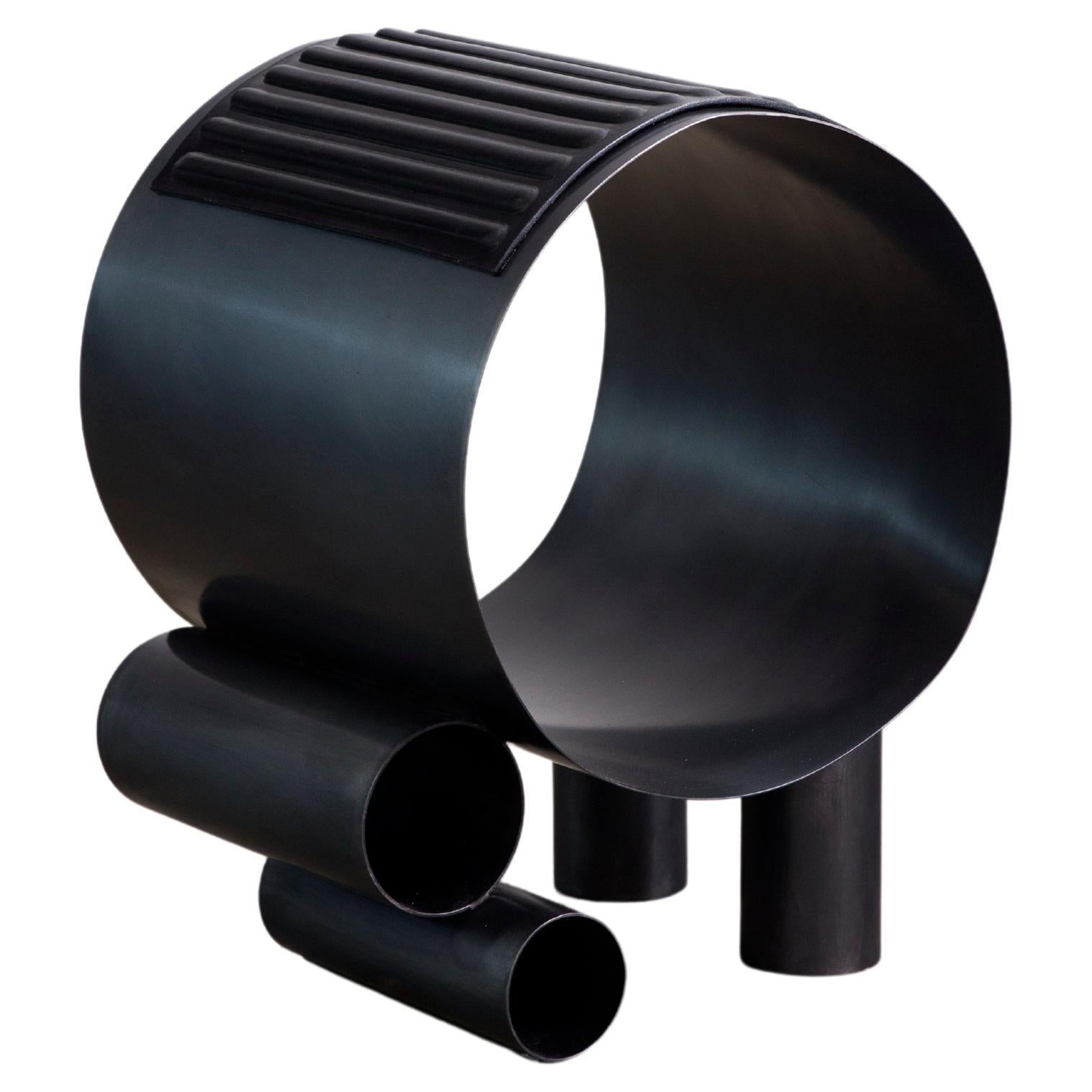Items Similar to Stool Designed by Stig Lönngren, Sweden, 1947
Want more images or videos?
Request additional images or videos from the seller
1 of 9
Stool Designed by Stig Lönngren, Sweden, 1947
About the Item
Stool designed by Stig Lönngren,
Sweden, 1947.
Teak and leather.
Stig Lönngren (1924-2022) received his carpentry qualifications in 1946. He went on to become an important Swedish interior architect, working with Carl-Axel Acking, Sven Hesselgren, Arne Rudberger, KF arkitektkontor, and, from 1965, with Peter Celsing. Lönngren was also one of the founders of the HI group –a group of sixteen master craftsmen and interior architects who strove to renew Swedish furniture design during the first half of the 1960s.
Measurements:
H: 43 cm / 17''
W: 47 cm / 18 1/2''
D: 32 cm / 12 1/2''
- Creator:Stig Lönngren 1 (Designer)
- Dimensions:Height: 16.93 in (43 cm)Width: 18.51 in (47 cm)Depth: 12.6 in (32 cm)
- Style:Mid-Century Modern (Of the Period)
- Materials and Techniques:
- Place of Origin:
- Period:
- Date of Manufacture:1947
- Condition:
- Seller Location:Stockholm, SE
- Reference Number:1stDibs: LU1006631541552
About the Seller
5.0
Recognized Seller
These prestigious sellers are industry leaders and represent the highest echelon for item quality and design.
Gold Seller
These expertly vetted sellers are highly rated and consistently exceed customer expectations.
Established in 1998
1stDibs seller since 2013
184 sales on 1stDibs
Typical response time: 2 hours
- ShippingRetrieving quote...Ships From: Stockholm, Sweden
- Return PolicyA return for this item may be initiated within 2 days of delivery.
More From This SellerView All
- Stool Designed by Ingvar Kamprad for Habitat, Sweden, 2004By Ingvar KampradLocated in Stockholm, SEStool designed by Ingvar Kamprad for Habitat, Sweden. 2004. Lacquered pine. Stamped. Measurements: H: 36 cm / 1' 2" Diameter: 32 cm / 1' 1/2".Category
Mid-20th Century Swedish Mid-Century Modern Stools
MaterialsPine
- Cabinet designed by Lars Larsson and Stig Lönngren for HI-Gruppen, Sweden 1960sBy Stig Lönngren 1Located in Stockholm, SEWall cupboard designed by Lars Larsson and Stig Lönngren for HI-Gruppen, Sweden, 1960s. Lacquered birch plywood and mirrored glass. Possibly unique. Stig Lönngren (1924-2022) rece...Category
Vintage 1960s Swedish Scandinavian Modern Cabinets
MaterialsGlass, Wood, Lacquer
- Stool Model 927 Designed by Josef Frank for Svenskt Tenn, Sweden, 1950sBy Josef FrankLocated in Stockholm, SEStool model 927 designed by Josef Frank for Svenskt Tenn, Sweden, 1950s. Mahogany and rattan. Measures: H: 43 cm W: 43 cm D: 28 cm Josef Frank was a true European, he was also a pioneer of what would become classic 20th century Swedish design and the “Scandinavian Design Style”. Austrian- born Frank started his design career as an architect after having trained at the Technische Hochschule in Vienna between 1903 and 1910. After his training he went on to teach at Kunstgewerbeschule (The Viennese School of Arts and crafts) where he developed and espoused the new school of modernist thinking towards Architecture and Design that was coming to fruition in Vienna at the time. He also went on to lead the Vienna Werkbund throughout the 1920s. This was a truly progressive group of Architects and Designers who set about improving the daily lives of Austrian people through modernist design and architecture in partnership with Arts and Crafts ideals and construction. Frank’s leadership of the Werkbund had already cemented his place at the forefront of European design. Frank’s time in Vienna was typified by his design for the “Die Wohnung” exhibition of the Deutscher Werkbund in Stuttgart, 1927 where he exhibited along side his contemporaries at the forefront of design, such as the likes of Le Corbusier and Walter Gropius. Here he showed a specially designed pair of flat-roofed reinforced concrete houses in what is now seen as a typical modernist style. What separated Frank’s house from the other 32 houses of the exhibition was the interior and furniture inside the building. It was described as “Neo-Classical” and filled with an eclectic mix of period pieces, modern design and pieces designed by Frank himself that seemed to cross the two worlds. This was a complete opposite direction to that which his fellow Architects were travelling in with their pared back and angular aesthetics. Frank said of his own work: “The house is not a work of art, simply a place where one lives,” and by this reasoning Frank rejected the regimental mechanisation of the living space that his contemporaries believed in, instead he set about creating congenial and spontaneous interiors. Frank’s practice saw him placing the bright colours and the soft forms of nature back into the furnishings and interiors that he thought modernism sorely mist. Frank, along with Oskar Walch set up Haus und Garten in Vienna in 1925. This was Frank’s first commercial foray into furniture and home furnishings and the company went on to become the most influential furnishing house in Vienna with a riotous depth of colour and interesting shapes becoming the trademark of their design. However this success was to come to an end with rise of Nazism in Vienna in the early 1930’s. Frank was Jewish, and he and his wife Anna decided they would leave Vienna for her motherland: Sweden, in 1933. Frank continued to design for Haus and Garten, visiting Vienna occasionally and designing the pieces that would continue to be the company’s best sellers long after Frank was forced to hand the company over in 1938 after the Third Reich annexation of Austria. When Josef and Anna had moved to Sweden Frank had struck up a working relationship with Design shop owner Estrid Ericson. Ericson was the proprietor of Svenskt Tenn that at this point was a successful interiors shop in Stockholm with the royal warrant of appointment to the Swedish Royal Household. In 1935 Frank had become the chief designer for Svenskt Tenn and had set about putting all of his creative effort into his designs for the company. At the World Expositions in Paris in 1937 and New York in 1939 the world saw for the first time the wealth of products that Frank had been working on, ranging from candlesticks to cabinets, there was not a domestic object that Frank had not subjected to his colourful, comfortable and organic style of Modernism. Frank’s new school of Modernism championed ideas such as chairs having a freeing, open back and that “If one desires the room to be comfortable…all pieces of furniture should allow for a free view of the separating line between the floor and the wall. A cabinet without legs breaks this line and thus reduces the feeling of space.” A world-wide audience tired of classic Modernism’s furniture with solid planes and aggressive forms leapt upon these ideas and Franks natural and bright designs for Svenskt Tenn became internationally desired. Frank created over 2000 designs for Svenskt Tenn and his products continue to be the core of their brand. Frank’s rejections of tubular metal and heavy lacquers within his furniture have insured his unique light form of Modernism continues to influence and flourish today. His natural toned mahogany and walnut pieces along with his tactile leather covered and brightly shaded lighting still bring the forms of nature back into the home. Original Frank pieces are now increasingly rare, highly desirable and are the epitome of “Scandinavian Design”. Renowned Designer and Academic Isle Crawford...Category
Vintage 1950s Swedish Mid-Century Modern Chairs
MaterialsRattan, Mahogany
- Stool Designed by Ejner Larsen and Aksel Bender Madsen for Willy BeckBy Ejner Larsen and Aksel Bender MadsenLocated in Stockholm, SEDenmark, 1950’s. Teak and leather. Stamped. Measures: H: 53 cm / 20 ¾’’ W: 54 cm / 21 ¼’’ D: 37 cm / 14 ½’’.Category
Mid-20th Century Danish Mid-Century Modern Stools
MaterialsLeather, Teak
- Stool designed by Ejner Larsen and Aksel Bender Madsen for Willy BeckBy Ejner Larsen and Aksel Bender MadsenLocated in Stockholm, SEStool designed by Ejner Larsen and Aksel Bender Madsen for Willy Beck, Denmark, 1950s. Brazilian rosewood and leather. Marked. Dimensions: H: 50 cm / 19 3/4'' W: 56 cm / 22'' D: 4...Category
Mid-20th Century Danish Mid-Century Modern Stools
MaterialsLeather, Rosewood
- Stool Designed by Calle Warfvinge, Sweden, ContemporaryLocated in Stockholm, SEStool designed by Calle Warfvinge, Sweden. Contemporary. Ash. Unique. Engraved ‘CW’. This contemporary Swedish stool is a work of unparalleled craftsmanship. Calle Warfvinge ca...Category
21st Century and Contemporary Swedish Mid-Century Modern Stools
MaterialsAsh
You May Also Like
- Stool I by Gentner DesignBy Christopher GentnerLocated in Geneve, CHStool I by Gentner Design Dimensions: D 29 x H 43 cm Materials: brass, silicone tubes A stool made of brass and silicone tubes. Gentner Design ...Category
2010s American Post-Modern Stools
MaterialsBrass
- 1970's Swedish Pine Stool by Stig SandkvistBy Stig SandqvistLocated in Brooklyn, NY1970's Swedish Pine stool by Stig Sandkvist, Vemdalen. Typical rounded shape for the era and with beautiful details on the top. In a very good condition. Country: Stig Sandkvist ...Category
Vintage 1970s Swedish Mid-Century Modern Stools
MaterialsPine
- Stool III by Gentner DesignBy Christopher GentnerLocated in Geneve, CHStool III by Gentner Design Dimensions: D 35.5 x W 35.5 x H 45.7 cm Materials: stainless steel, leather Formed leather supported by machined aluminum, raised up by formed stainl...Category
2010s American Post-Modern Stools
MaterialsStainless Steel
- Stool II by Gentner DesignBy Christopher GentnerLocated in Geneve, CHStool II by Gentner Design Dimensions: D 35.5 x H 45.7 cm Materials: darkened stainless steel, leather Gentner Design Rooted in a language of sculpture, character defining details, and world renowned craftsmanship, the work is found at the crossroads of design and art. Established in 2011, the namesake furniture label is a rare combination of aesthetic dexterity and mastery of craft resulting in furniture and objects that are expressive, formal, and transcend materiality. The collection is based in metal and incorporates only natural materials such as leather, wood, and glass in unique ways, challenging our assumptions. Christopher Gentner Christopher Gentner, with a BFA in metalsmithing from the Cleveland Institute of Art and apprenticeships under sculptors and jewelers, together with dedication to craft, quickly developed his reputation nationally as a foremost authority of metal fabrication and furniture. One of his crowning achievements was the re-creation and fabrication of the Frank Lloyd Wright...Category
2010s American Post-Modern Stools
MaterialsStainless Steel
- Object 064 Stool by NG DesignLocated in Geneve, CHObject 064 stool by NG Design Dimensions: D38 x H45 cm Materials: Powder coated steel, Boucle upholstery Also Available: All of objects available in different materials and colo...Category
2010s Polish Post-Modern Stools
MaterialsSteel
- Slumped Leather Stool by Gentner DesignBy Christopher GentnerLocated in Geneve, CHSlumped leather stool by Gentner Design. Dimensions: D 48 x W 48 x H 43 cm. Materials: aluminium, raw leather. These uniquely shaped stools are incredibly lightweight and extrem...Category
2010s American Post-Modern Stools
MaterialsAluminum
Recently Viewed
View AllMore Ways To Browse
Furniture 1947
Swedish Animal Skin Chairs
Swedish Hardwood Chairs
Swedish Leather Stool
18h Century Sweden
2 Swedish Stools
Stig Lonngren
Bauhaus Leather Stool
Pair Of Gilt Stools
Velvet French Stool
Vintage Wood Bar Stools
Space Age Bar Stool
Embossed Leather Stool
Bar Stools Space Age
French Deco Salon Chair
Hide Counter Stool
Tribute Stool
Art Deco Stool Pair





